Oya Palette - 大谷石の未利用材を活用した新しい素材
大谷石にはミソと呼ばれる茶色い斑点がある。形成の過程で入った不純物が風化しやすい粘土鉱物となったもので、劣化し抜け落ちて穴となる。この穴が大きいものは建材として使われずに放置されている。ミソの入っていた穴に樹脂を充填する事で、自然の作る美しい模様を強調し、新しい表情を持つ大谷石Oya Paletteを開発した。
Oya stone has brown spots called “Miso,” which are formed when impurities introduced during the stone’s formation process transform into clay minerals. These spots quickly weather away, leaving behind holes. Stones with large holes are left unused as building materials. By filling the holes with resin, Oya Palette emphasizes the beautiful patterns naturally created, giving birth to a new appearance of Oya stone.
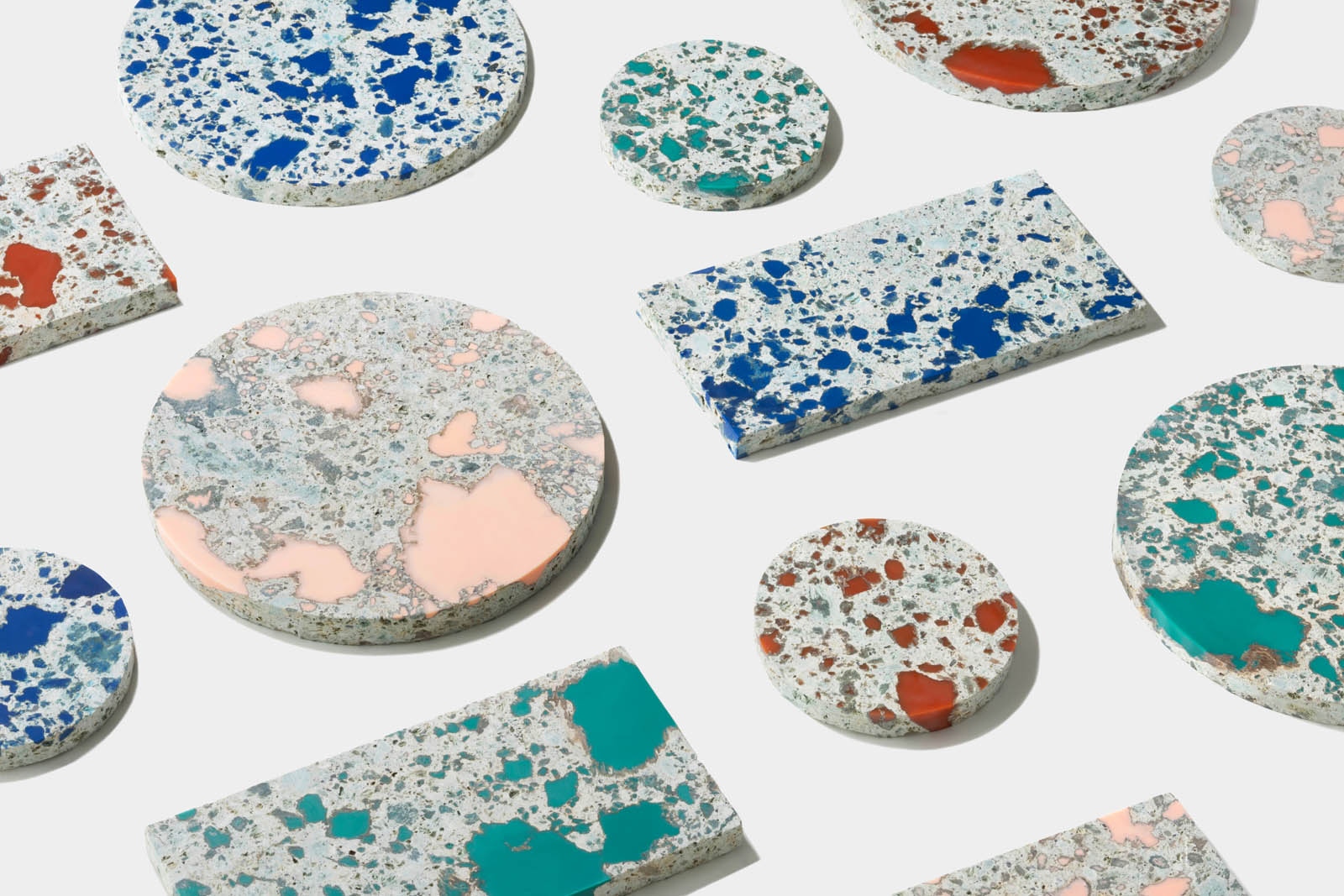
大谷石は、栃木県宇都宮市の北西部にある大谷町で採れる軽石凝灰岩である。今から約1,500万年前の海底火山の活動による火山灰や軽石が堆積し、それが500万年程かけて凝固することで出来ている。軽くて加工がしやすく耐火性や防湿性にも優れているため、古くから蔵や擁壁などに使われてきた。
Oya stone is a type of pumice tuff found in Oya town, located in the northwestern part of Utsunomiya City, Tochigi Prefecture. It formed about 15 million years ago from volcanic ash and pumice deposited by submarine volcanic activity, which solidified over approximately 5 million years. Due to its lightness, ease of processing, and excellent fire resistance and moisture-proof qualities, it has been used since ancient times in the construction of storehouses and retaining walls.

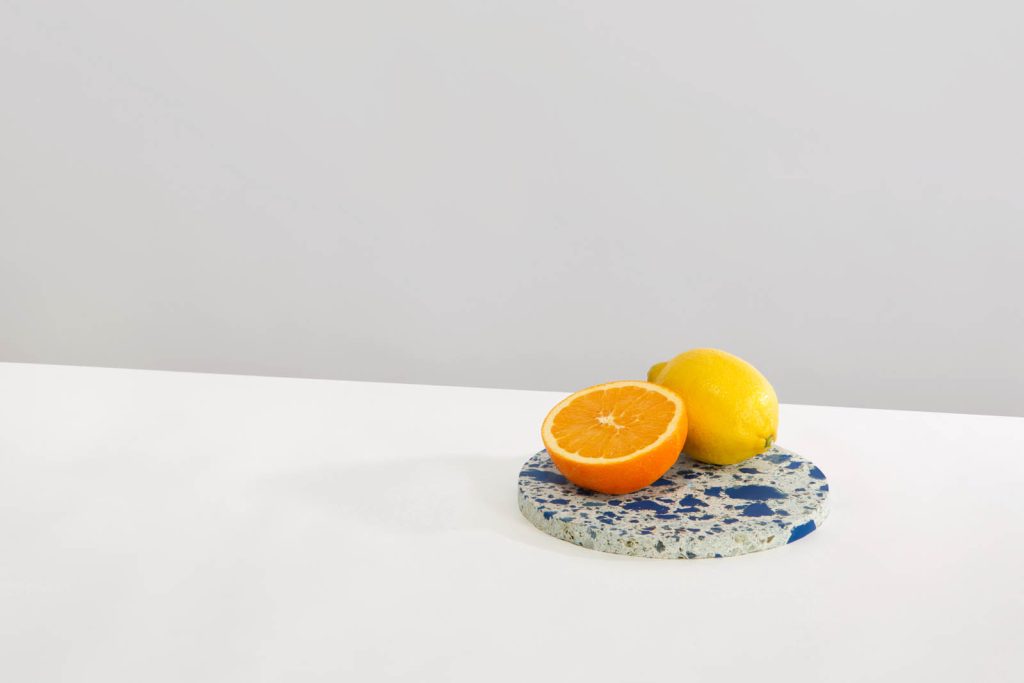
大谷石の特徴であるミソと呼ばれる茶色い斑点は、形成の過程で入った不純物が風化しやすい粘土鉱物となったもので、劣化し抜け落ちて穴となってしまう。そのためミソが大きかったり多かったりするような部分は、敬遠されて価値が下がってしまい、そもそも掘り出されなかったり、掘り出されても出荷されずに放置されたりしている。
Oya stone has brown spots called “Miso,” which are formed when impurities introduced during the stone’s formation process transform into clay minerals. These spots quickly weather away, leaving behind holes. As a result, parts of the stone with large or numerous miso spots are devalued and often avoided, leading to them either not being extracted in the first place or being left unused and unshipped after extraction.
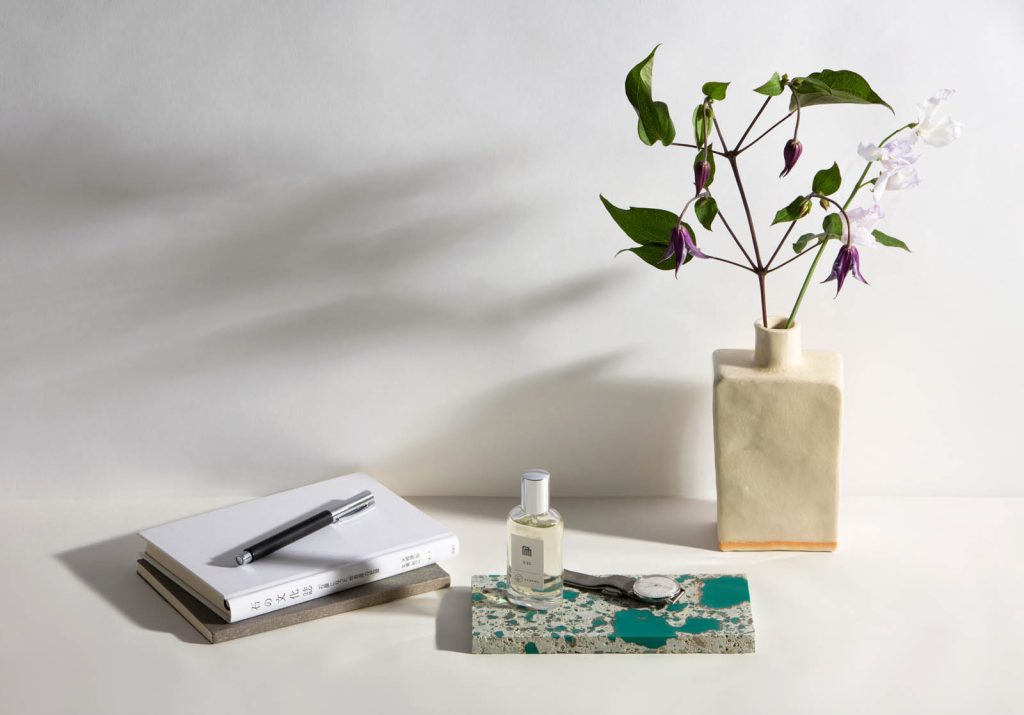
そこでそんなミソの多い大谷石をむしろ大谷石らしい特徴を多く持つ素材としてポジティブに捉え、ミソの入っていた穴に樹脂を充填する事で、自然の作る美しい模様を強調し、新しい表情を持つ大谷石=Oya Paletteを開発した。カラフルな色が板の上に飛び散ったような見た目から、絵を描くときのパレットに見立てて名付けている。価値が低いとされている穴の多い大谷石に手をかけることで、価値のあるものにアップサイクルすることを意図し、限りある資源を有効に使い、大谷石という素材の新しい可能性を生み出している。
Therefore, instead of viewing miso spots as a drawback, we chose to perceive it as a material rich in characteristic features typical of Oya stone. By filling the holes left by miso with resin, the natural and beautiful patterns created by these imperfections are emphasized. The name “Oya Palette” is inspired by the resemblance of the colorful resin-filled holes to paint splatters on an artist’s palette. This project aims to upcycle Oya stone, often deemed less valuable due to its numerous holes, into a valuable material. It represents an effort to efficiently utilize limited resources and explore new possibilities for Oya stone as a material.

ミソの穴を樹脂で埋めることで、柔らかく欠けやすいという弱点を軽減し、強度が増したためこれまで大谷石では不可能だった薄い素材としても使える。樹脂は一部植物由来の成分で製造されたものを使用している。大谷石は採掘直後は水分を含んでいるので青色をしてるが、乾燥すると少し緑がかった白色になり、経年で黄色から茶色へと変化していく。そのような大谷石の持つ色に合わせて4つのカラーラインナップを作った。
By filling the miso holes in Oya stone with resin, the inherent weaknesses of the stone—its softness and tendency to chip—are mitigated, enhancing its strength. This improvement allows Oya stone to be used in thinner applications that were previously not possible. The resin used includes components derived from plants. Oya stone is blue when freshly mined due to its moisture content but dries to a slightly green-tinged white color, gradually changing to yellow and then brown with age. To complement these natural shades of Oya stone, four color lineups have been created, tailoring to the stone’s evolving hues.
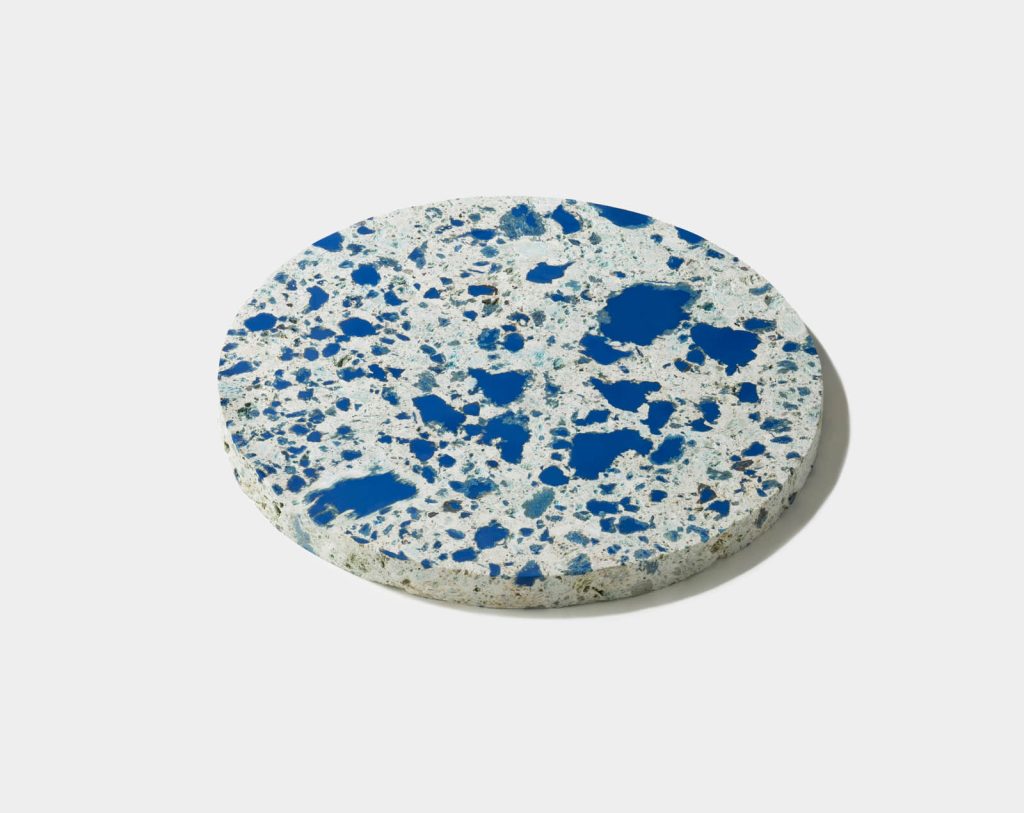

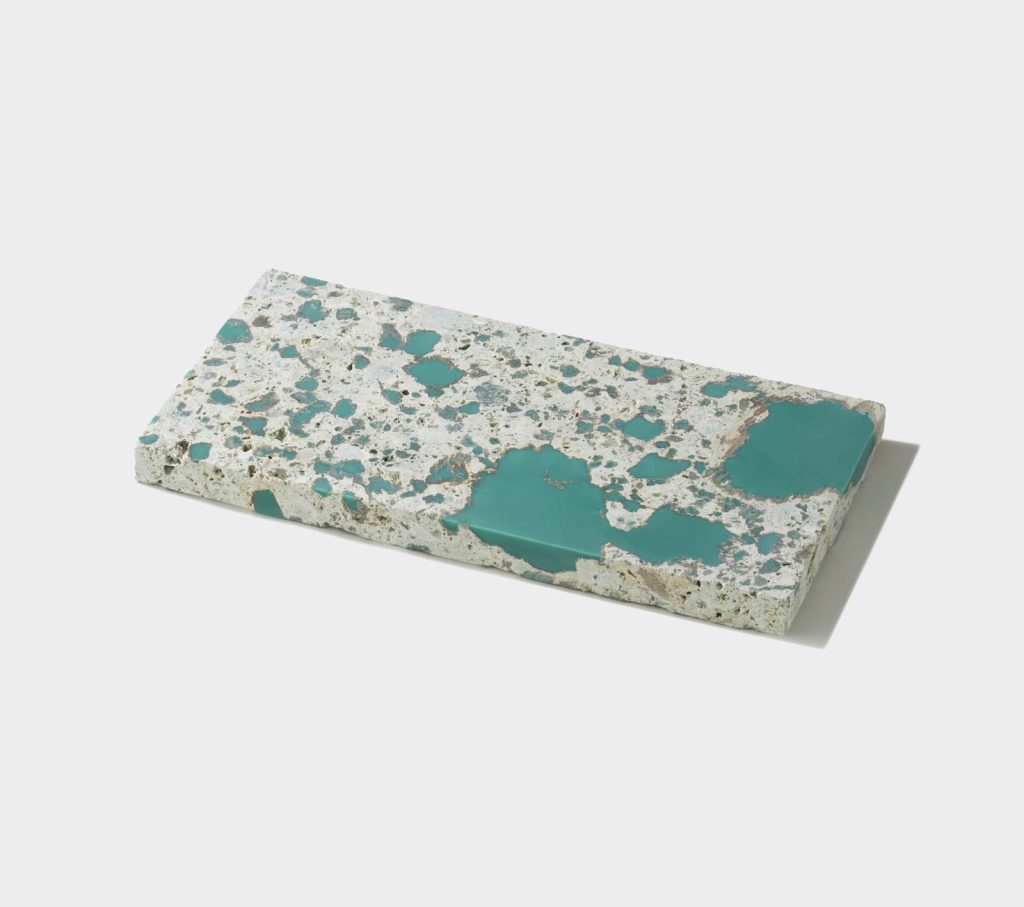
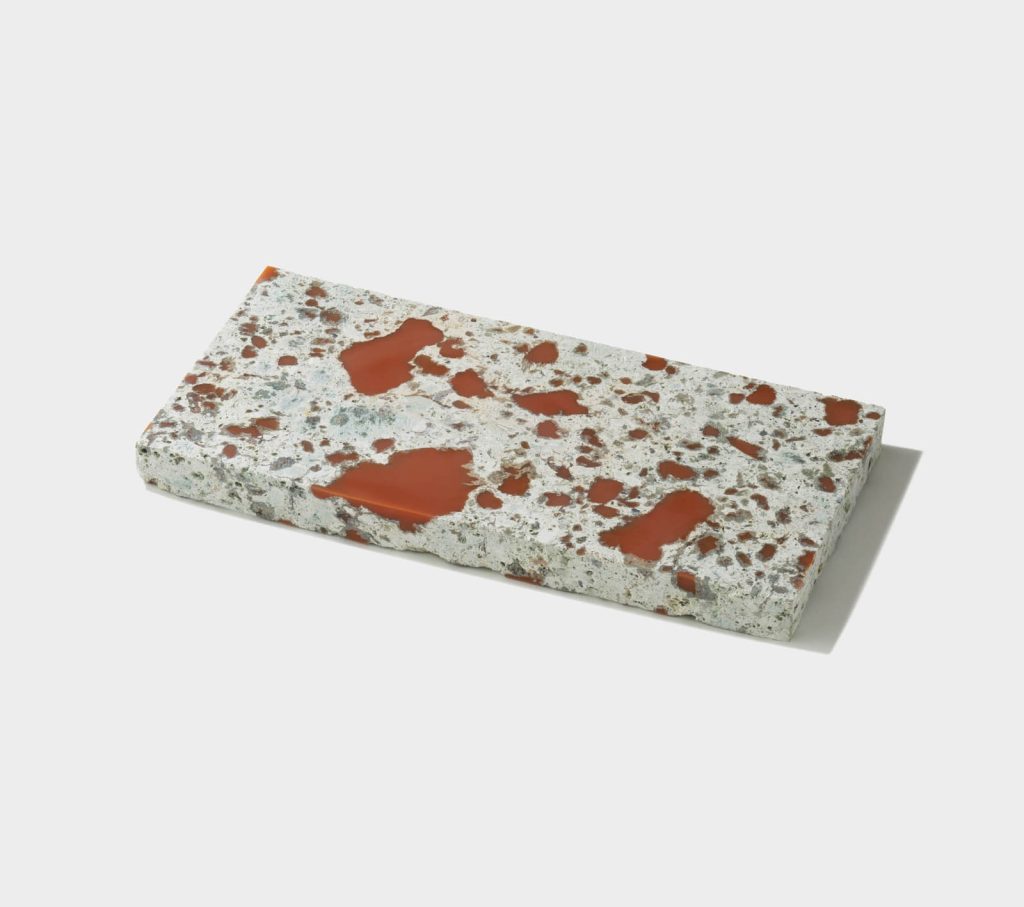
クライアント:株式会社タニグチ
Client: Taniguchi Co., Ltd.
 PREV
PREV
